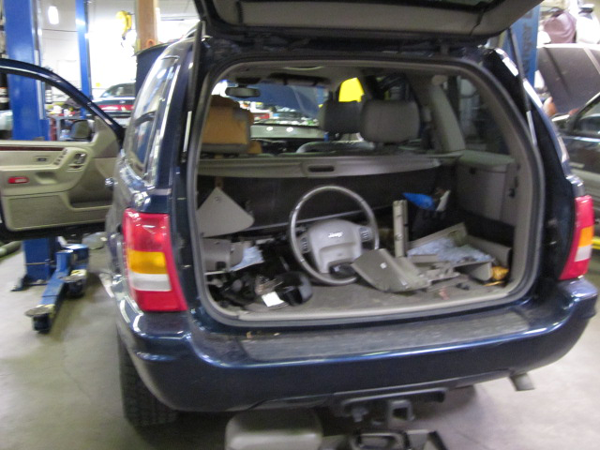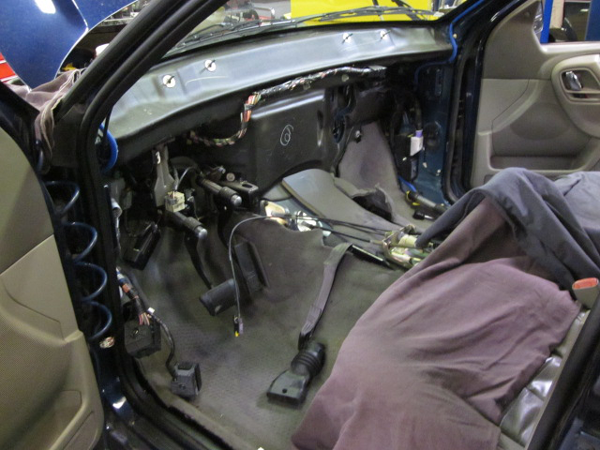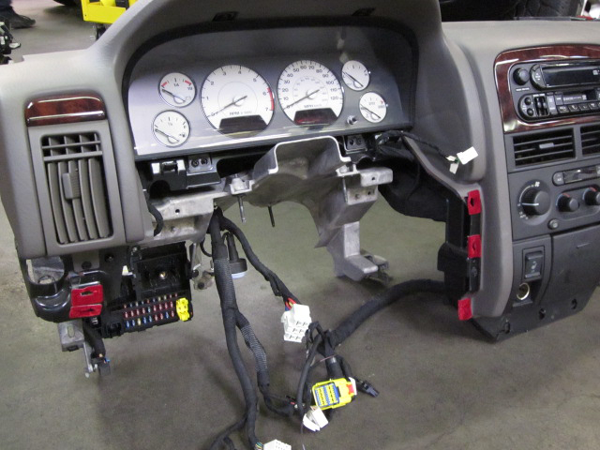 You’ve been there. You’re standing at the Service Counter looking at the bill for repairs. There’s a long list of line-items, but looking closer you see that the parts expense was only a few dollars and most of the bill is labor costs. How can it possibly cost that much to replace an inexpensive part? Frequently, the answer lies in diagnostic complexity and/or how automobiles are engineered and assembled. Vehicles are always a compromise between production expense, driving functionality and long-term reliability. Ease of repair is not on the radar for the engineers, and difficult repairs mean expensive repairs. There are many common repairs and vehicles that are classics in this arena…
You’ve been there. You’re standing at the Service Counter looking at the bill for repairs. There’s a long list of line-items, but looking closer you see that the parts expense was only a few dollars and most of the bill is labor costs. How can it possibly cost that much to replace an inexpensive part? Frequently, the answer lies in diagnostic complexity and/or how automobiles are engineered and assembled. Vehicles are always a compromise between production expense, driving functionality and long-term reliability. Ease of repair is not on the radar for the engineers, and difficult repairs mean expensive repairs. There are many common repairs and vehicles that are classics in this arena…
Your quirky vehicle
Many, many vehicles have individual design quirks that make certain repairs difficult on those models that would be easy on other vehicles. Calvin Hamilton, one of our ASE-Certified techs, ran into one of these situations working on his own car, a Toyota MR2. “They warned me about this when I bought the car” he said. “They said it WOULD need to be replaced, and they called it the ‘hose from hell’”. More accurately it’s called a water transfer hose, and it’s a 4” long hose that’s a common failure part on the MR2. “I bought the part for $10 and got to work.”
The hose lives between the engine and firewall, down toward the bottom of the engine. It isn’t even visible, so patience, dexterity, small hands and the ability to work by braille is required. It requires the technician to squeeze an arm, hand and tools into tiny spaces, and then blindly manipulate cumbersome tools to remove the hardware and hose then awkwardly fiddle the new hose and fasteners into place; all done blindly and in contorted physical posture. Six hours later, the repair was complete. “I just couldn’t believe something that is known to fail so often would be placed so inconveniently. A little care in the engineering and it would have been a simple fix.” Although Cal ended his story there, we still occasionally hear him grumble about the Hose from Hell.
It doesn’t take much searching to come up with several other engineer-inflicted punishments; and repairs that punish Technicians will also cause pain to the vehicle’s owner. Dave Gettmann, another ASE-Certified tech with over 39 years’ experience, had a Nissan Altima on his rack recently. “This is just ridiculous”, he said. “I’m replacing the motor mounts. They’re responsible for holding the motor and isolating engine vibration from the chassis and the driver. On most vehicles they’re accessible from beneath the car and may take an hour or less per mount. It’s usually a straightforward repair, but not on Altimas! On these, you have to drain the fluids and manipulate things so the technician can LIFT THE ENGINE in order to get to the mount bolts FROM THE TOP of the vehicle! If the manufacturer moved the connection points less than an inch, this wouldn’t be a problem at all. This tiny little difference doubles the labor time on the repair.”
Every vehicle we work on goes through our Post-Service Check, where we check fluids, tires, and drive lights. On most vehicles if we find a burnt-out bulb we replace it for just the cost of the bulb. It’s an inexpensive part, a quick repair, and we know you’ll be happier and safer if we do it. However, Matt McKenzie, the ASE-Certified tech who handles our Post-Service, says that the Toyota Prius and Sienna are different stories. “How many techs does it take to change a Prius license plate bulb? Just one, but it takes some time! On most cars, the bulb lens unscrews and you pop in the bulb. On these cars, there is no easy access. You have to remove the interior panel on the rear hatch, including all the easily-breakable plastic retaining clips, to get to the bulb. Then, you have the time and effort of putting it together again.” Yet another example of an automobile design that wasn’t thought out very well.
The core of the problem
This classic example of a “high labor to parts ratio” repair doesn’t revolve around any particular vehicle make. In many vehicles replacing the heater core is a real pain. The heater core is a small radiator-like object responsible for bringing engine heat into the passenger cabin for climate control. The heater core is located under the dash, usually behind the glove box. When it goes bad, antifreeze may leak into the cabin, your windshield can fog, and your car might smell like antifreeze. When heater cores fail they need to be replaced; there aren’t many effective band-aids available. The heater core, normally a $150 to $375 part, usually requires the dash to be removed for replacement which requires as much as 10 hours and often more of labor. It’s hard to even recognize your vehicle when the dash and much of the interior is removed… take a look at these pictures of a heater core replacement in a Jeep Grand Cherokee. You can see why this “simple” repair can take a day or longer.
Making labor work for you
In most cases there’s nothing to be done about the labor in a job. Wherever we can, though, we make sure you get any possible advantage from over-lapping labor processes. (These are situations where labor from one operation covers or partially covers labor for another). A timing belt replacement is a good example. The timing belt is a critical component of your engine, coordinating the operation of all main engine components; if it fails your engine stops and in some cases the engine can be damaged. We’ve written a very detailed article about the role parts and labor play in timing belt replacement, but here’s the short story: The timing belt is buried under components and covers on the front of the engine and can only be accessed by removing these things in a process that takes several hours. Once the timing belt is exposed, replacing the part is straightforward. However, belt tensioners, idlers, oil seals, hoses, valve covers, water pump, oil pump and thermostat etc. are also exposed while the belt is uncovered. These are all parts that wear and can fail (possibly compromising that new timing belt) requiring serious labor to be replaced later. It makes sense in most cases to preventatively replace suspect worn parts “as long as you’re in there”. Any one of these parts would take expensive labor hours to replace if it failed later. This is smart insurance!
Knowledge is power
We’ve written before on how shops calculate estimates, how Technician’s pay structures can affect their work, how Service Advisor’s pay can affect their repairs they recommend, and other issues regarding the cost of repairs. All that makes sense, but it’s still surprising to see a $50 part that generates a $600 bill. We hope these examples shed some light on the subject. Whether you’re dealing with our shop or someone else, make sure you understand the recommended repairs. Make sure you know if the labor estimate is fixed or if the repair is a time-and-materials estimate. That way, even if it’s unpleasant, you at least won’t be surprised by the final bill.














